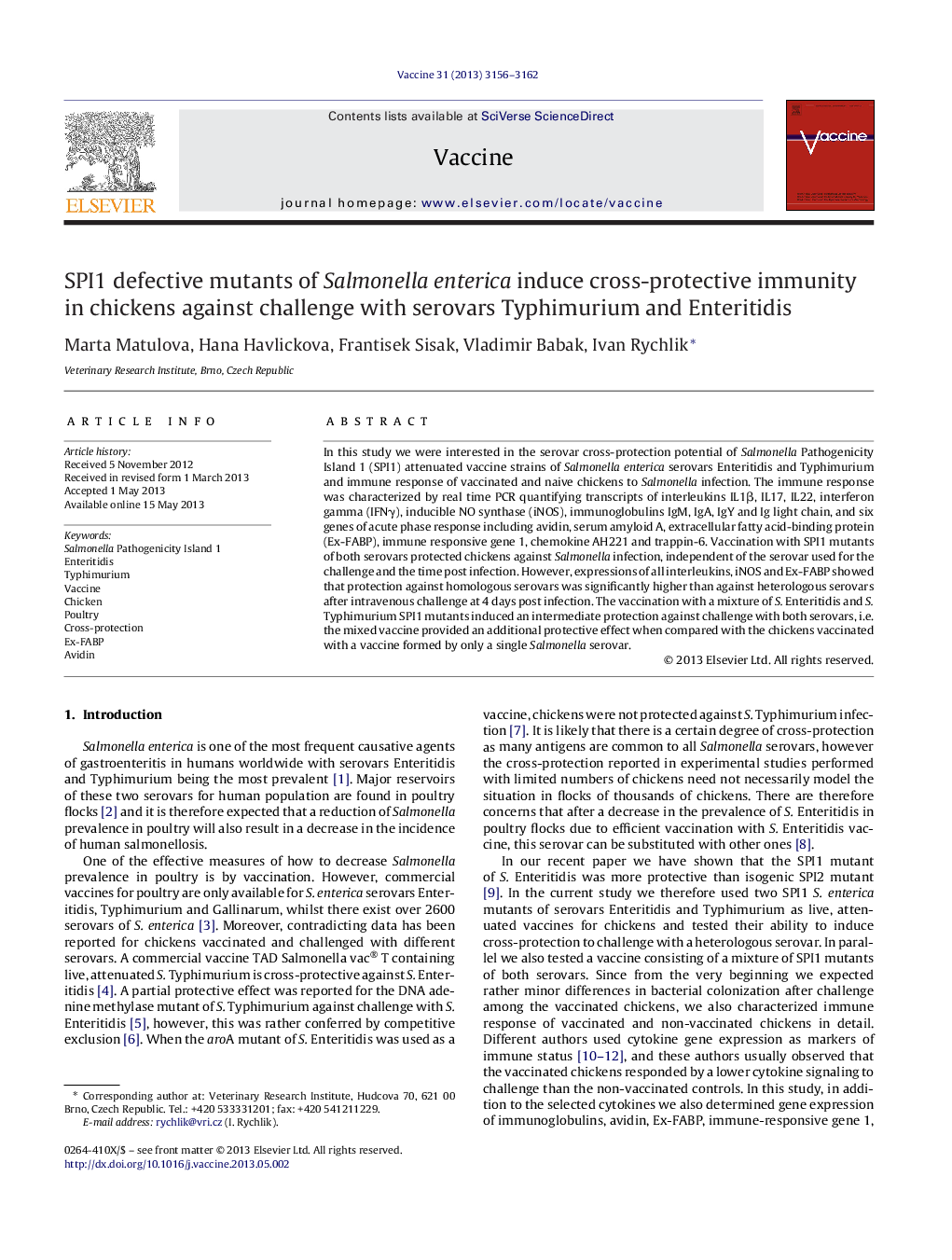| Article ID | Journal | Published Year | Pages | File Type |
|---|---|---|---|---|
| 2402565 | Vaccine | 2013 | 7 Pages |
•Novel target genes were used for the characterization of chicken immune response.•Salmonella SPI1 mutants induced a cross-protection against different serovars.•The protection to heterologous challenge was lower than to homologous challenge.•A vaccine consisting of a mixture of serovars provided optimal protection.
In this study we were interested in the serovar cross-protection potential of Salmonella Pathogenicity Island 1 (SPI1) attenuated vaccine strains of Salmonella enterica serovars Enteritidis and Typhimurium and immune response of vaccinated and naive chickens to Salmonella infection. The immune response was characterized by real time PCR quantifying transcripts of interleukins IL1β, IL17, IL22, interferon gamma (IFNγ), inducible NO synthase (iNOS), immunoglobulins IgM, IgA, IgY and Ig light chain, and six genes of acute phase response including avidin, serum amyloid A, extracellular fatty acid-binding protein (Ex-FABP), immune responsive gene 1, chemokine AH221 and trappin-6. Vaccination with SPI1 mutants of both serovars protected chickens against Salmonella infection, independent of the serovar used for the challenge and the time post infection. However, expressions of all interleukins, iNOS and Ex-FABP showed that protection against homologous serovars was significantly higher than against heterologous serovars after intravenous challenge at 4 days post infection. The vaccination with a mixture of S. Enteritidis and S. Typhimurium SPI1 mutants induced an intermediate protection against challenge with both serovars, i.e. the mixed vaccine provided an additional protective effect when compared with the chickens vaccinated with a vaccine formed by only a single Salmonella serovar.
